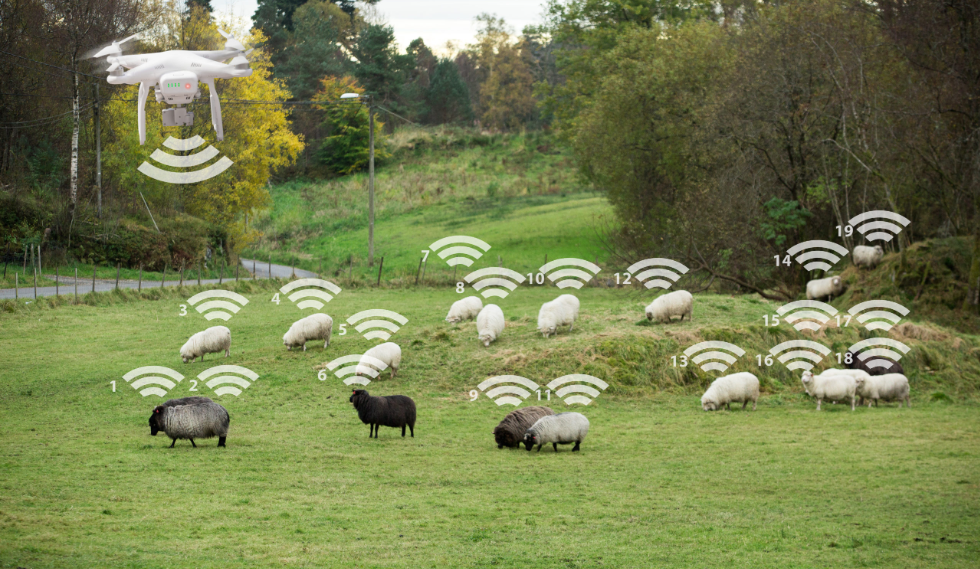RFID Is Transforming the Livestock-Management Industry

In the ever-evolving landscape of agriculture, the integration of technology has become a game-changer, and one of the most transformative advancements is Radio-Frequency Identification (RFID) technology. This blog post delves into the profound impact of RFID in livestock management, exploring how it works, its benefits, and the pivotal role it plays in shaping the future of farming.
RFID in Action: Tracking and Identifying Livestock
RFID is not just a buzzword; it’s a practical solution revolutionizing how farmers track and identify individual animals such as cows, bison, pigs, and goats. The process involves attaching tamper-proof RFID tags to the animals’ ears using a user-friendly applicator tool. These durable plastic-cased tags, often comprised of two discs joined through the ear, are akin to piercing a human ear. Each tagged animal receives a unique 15-digit tracking number, and RFID readers, whether portable or stationary, identify animals by scanning their RFID tags.
The Evolution from Metal Tags to RFID
Traditionally, farmers relied on metal ID tags for animal identification, a process prone to errors and inefficiencies. The transition to RFID has been monumental, offering enhanced functionality and durability. Unlike metal tags that required visual reading, RFID tags are electronically read, eliminating human error and the need for animals to stand still during the process. The video shared in the article visually illustrates how RFID tags are seamlessly integrated into livestock tracking, showcasing the efficiency and ease of this technology.
Beyond Identification: A Wealth of Information
RFID tags usher in a new era of comprehensive data management in livestock farming. These tags, coupled with specialized software, store an animal’s complete history, including weight, age, sex, birthing time, offspring, and medical records. This wealth of information empowers veterinarians to obtain detailed health insights by simply scanning an animal’s tag. This shift towards “smart farming” leverages IoT technologies to streamline activities from milking and feeding to breeding and beyond.
Benefits of RFID in Livestock Management
The advantages of RFID technology in livestock management are multifaceted, providing farmers with a competitive edge. Some key benefits include:
- Time and Labor Savings: RFID streamlines the identification process, saving valuable time and reducing labor costs.
- Disease Identification: Swift and accurate tracking enables faster identification of diseased animals, facilitating prompt quarantine measures.
- Accurate Inventory Management: RFID ensures precise tracking of cattle inventory, enhancing overall operational efficiency.
- Authentication: RFID tags authenticate animals, preventing errors and ensuring reliable data for management decisions.
RFID’s Role in Disease Management
Governments worldwide recognize the potential of RFID in disease traceability among livestock. The technology becomes a critical tool in managing and preventing the rapid spread of diseases, safeguarding the global food supply. By quickly detecting and tracing outbreaks, RFID contributes to effective quarantine measures and protects both animal welfare and the agricultural industry.
Regulatory Landscape: The Rise of RFID Mandates
The adoption of RFID technology is not just a trend; it’s becoming a necessity. Governments, such as the U.S., actively promote RFID use in livestock management through initiatives like the National Animal Identification System. In 2020, the USDA distributed eight million RFID ear tags to cattle and bison ranchers, emphasizing the importance of this technology. The USDA is contemplating mandating the use of RFID ear tags for all cattle and bison involved in interstate travel, further solidifying RFID’s role in the future of livestock management.
Looking Ahead: A Growth Prognosis for RFID in Livestock Management
As RFID continues to gain prominence, research firm Technavio predicts that the global RFID market for livestock management will reach a staggering $974.7 million by 2023. North American farmers are expected to represent a significant portion of this growth, underlining the technology’s impact on modernizing agriculture.
In conclusion, RFID technology is not just reshaping how we manage livestock; it’s laying the foundation for a more efficient, data-driven, and sustainable future in agriculture. The marriage of RFID and livestock management is a testament to the industry’s commitment to innovation, efficiency, and responsible farming practices.
